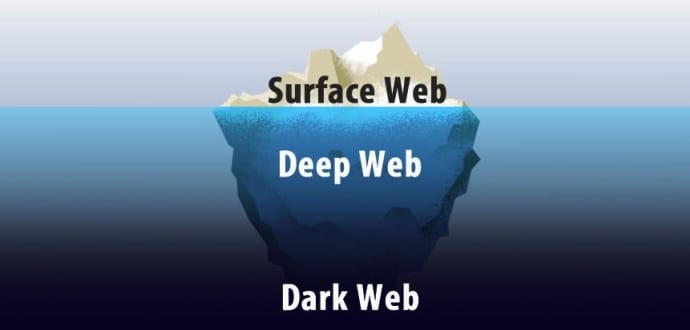
Lately, we’ve been coming across plenty of news stories that talk about the web and being true to the media roots, quite a few terms end up getting lost in translation when the news gets into unknown territory. This isn’t restricted to just the news, even mainstream media has expanded its horizons with a fair number of shows and films venturing into the cyber security and hacking. All this while having a positive effect on the spread of information, also results in the spreading of incorrect information – especially so when it comes to terms such as deep and dark web being used liberally.
The back story
Before we get into the details, a little backstory to help us understand the origins of these terms. The first thing that a layman needs to know, is that the internet and the web, are two different entities. The Internet was created by DARPA (Defense Advanced Research Projects Agency) in the 1960’s. Many of you may have read about the internet would know that emails and message boards existed even before the web came into being – these services used the internet.
The World Wide Web as we know it was developed nearly 3 decades later at CERN (European Organization for Nuclear Research), the particle physics research lab near Geneva, Switzerland. The web consists of HTML and HTTP protocols that are used by browsers to communicate with servers. This web – that was initially created to enable particle physicists to share data sets – runs on top of the internet in the same way that voice gets transmitted over phone lines.
The Surface Web
An ideal way to understand the classifications of the web is to consider it to be like an ocean. The surface web is akin to the surface of the ocean, the part that is easily visible and accessible that is accessible through Google Chrome, Mozilla Firefox, and Microsoft Edge. The deep web will then be a layer below the surface that needs you to have a scuba diving suit and the dark web will be the layer even below the deep web – the bottom part of the ocean that one needs submarines to access.
The surface web has been part of the world wide web right since the first browser was invented. A simpler way to put this across is that the surface web contains everything that is publicly accessible via a search engine. This is the part of the web you access when you read an article on a news site, buy something from Amazon or watch a cat video on YouTube.
It is long considered to make up only 5% of the entire world wide web. A number that seems minuscule but just goes to how much data exists on the web today. The Deep Web is generally considered to be anywhere between 500 to 5000 times larger. In perspective, there are roughly twenty terabytes (TB) of data and roughly one billion documents on the surface web compared to 7,500 terabytes (TB) of discovered data and almost 600 billion discovered documents on the deep web.
(Scuba) Suit Up – Deep Web
The Deep web in essence – is exactly opposite to the Surface web in that it contains data that cannot be discovered by a search engine. The data in the deep web is still publicly accessible, though you will need special access to this data in the form of access credentials ( a username and password ). A good example of the data in the Deep Web is the pin you generate to access your bank account or your Gmail inbox. As you can see, both of these are easily accessible but still need special permissions.
Despite the term being used to make us feel like it’s a sinister place, we would not have been able to use the Web without the deep web. This is the part of the web that contains our medical records, financial records, social media files, and plenty other important information that we would not want to be accessible by a Google search. It is this need of security that brought about a need for a partition in the world wide web to keep a portion of the web secure.
Time for the submarine – Dark Web
The Dark Web is a part of the Deep Web with the one exception that it was specifically designed NOT to be accessible by normal web browsers. The technology needed to make the Dark Web a reality was created by US Military Researchers in the 90’s and is still funded by them. The technology was created to allow intelligence agencies to send and receive data anonymously. Christened ” the Onion Router ” – the name coming from the application layer encryption within a communication protocol stack; many layers representing the layers of an onion – it quickly had its name shortened to TOR.
With this information, comes another question, if it was created by the US Military, why is it accessible to anyone? The answer to this is simple, how do you hide anonymous messages when you have nothing to hide behind? The more people used anonymous messaging, the harder it would be for counter-intelligence agencies to identify the messages intended for the US Military. Another perceived benefit of this was to allow individuals living in countries with an oppressive regime a way to communicate without facing its consequences. A good idea, however, we today find the dark web being used for illegal activity by individuals using the cover of anonymity. Which is why people are warned to enter the dark web at their own risk.
No comments:
Post a Comment